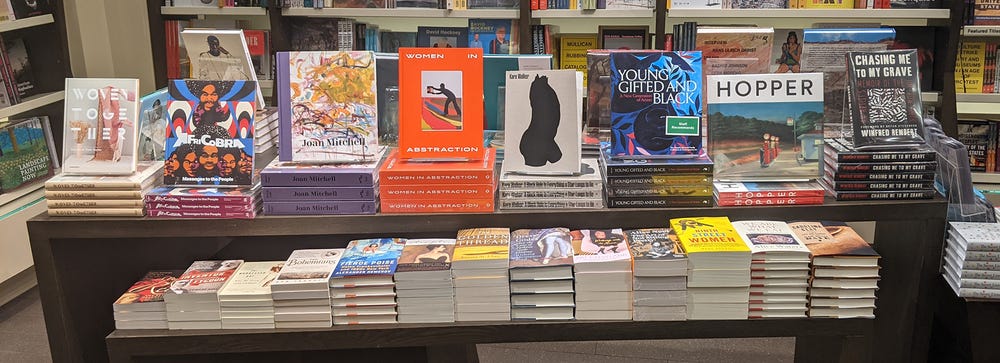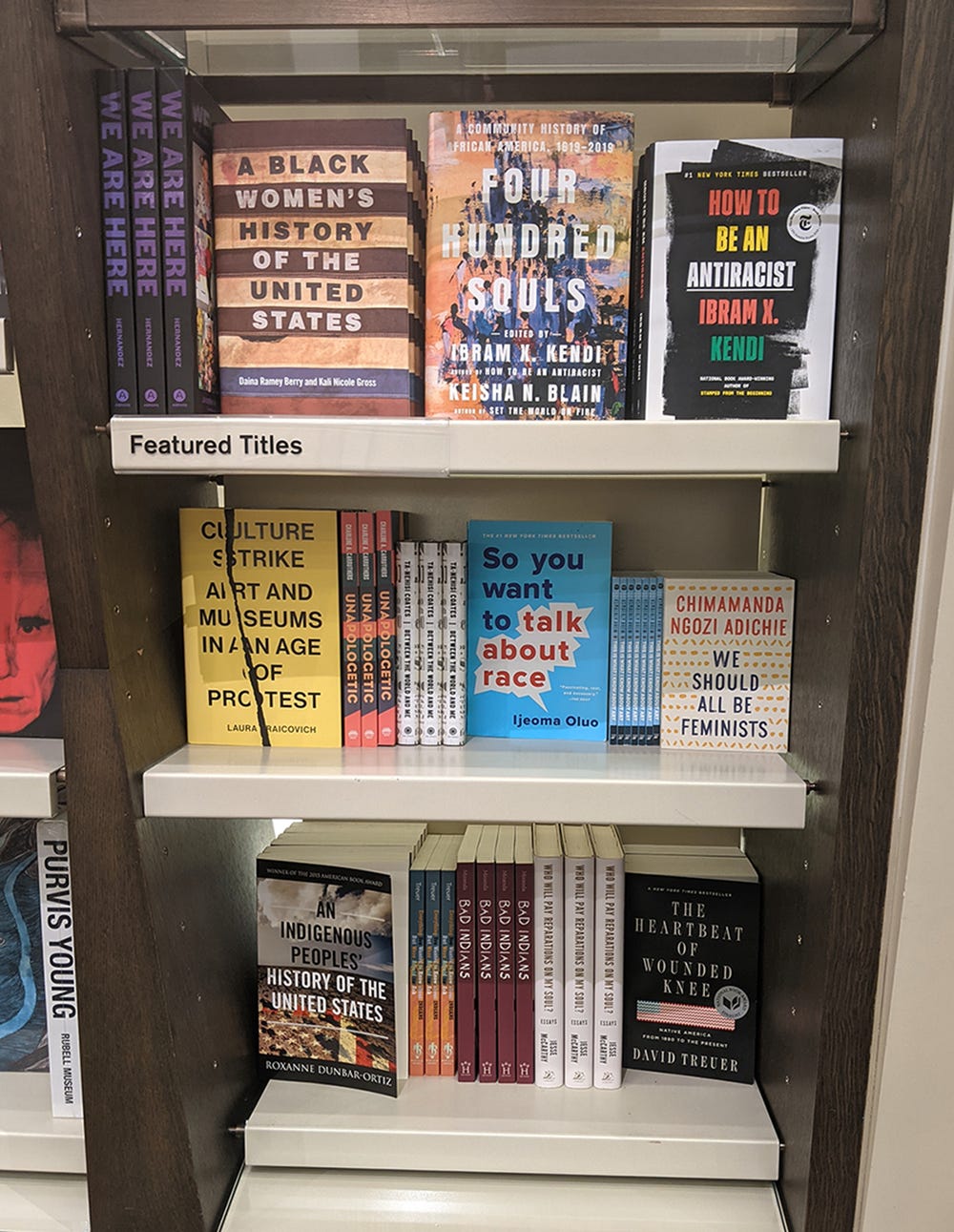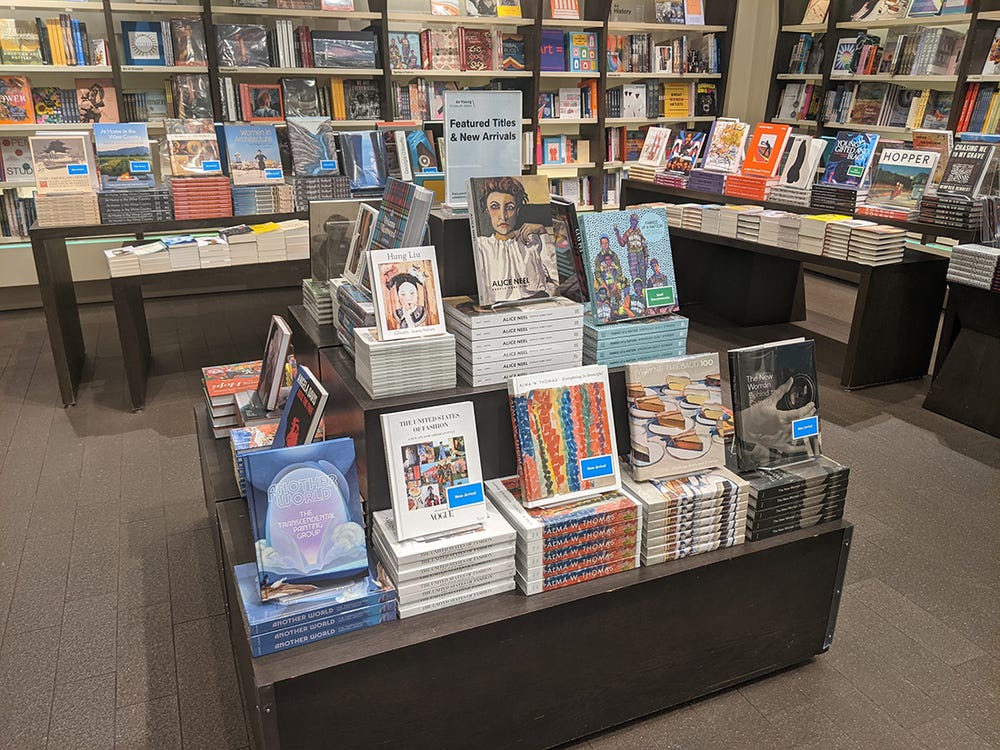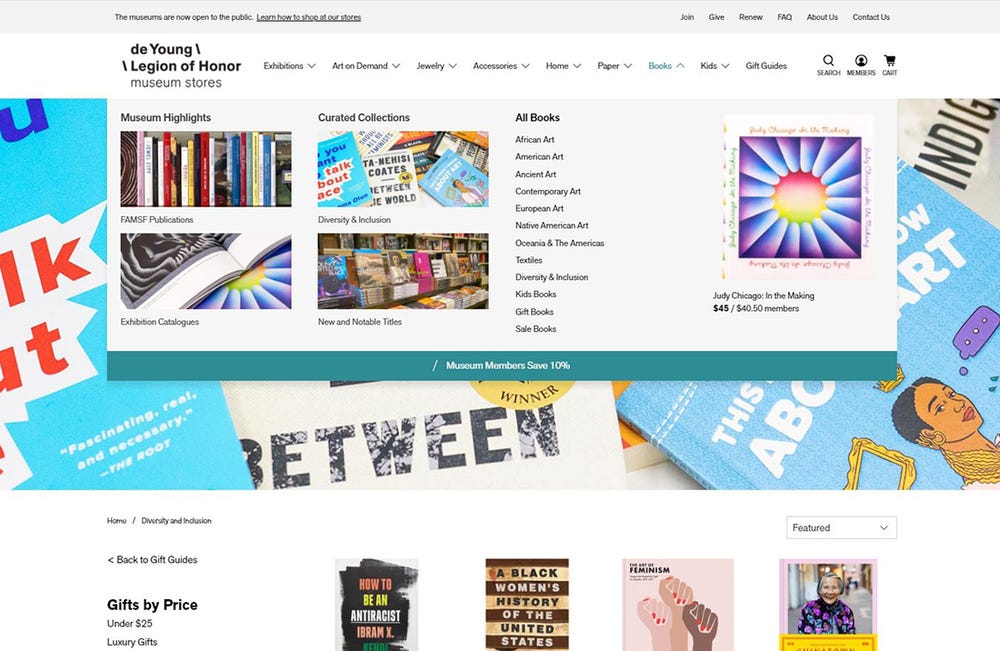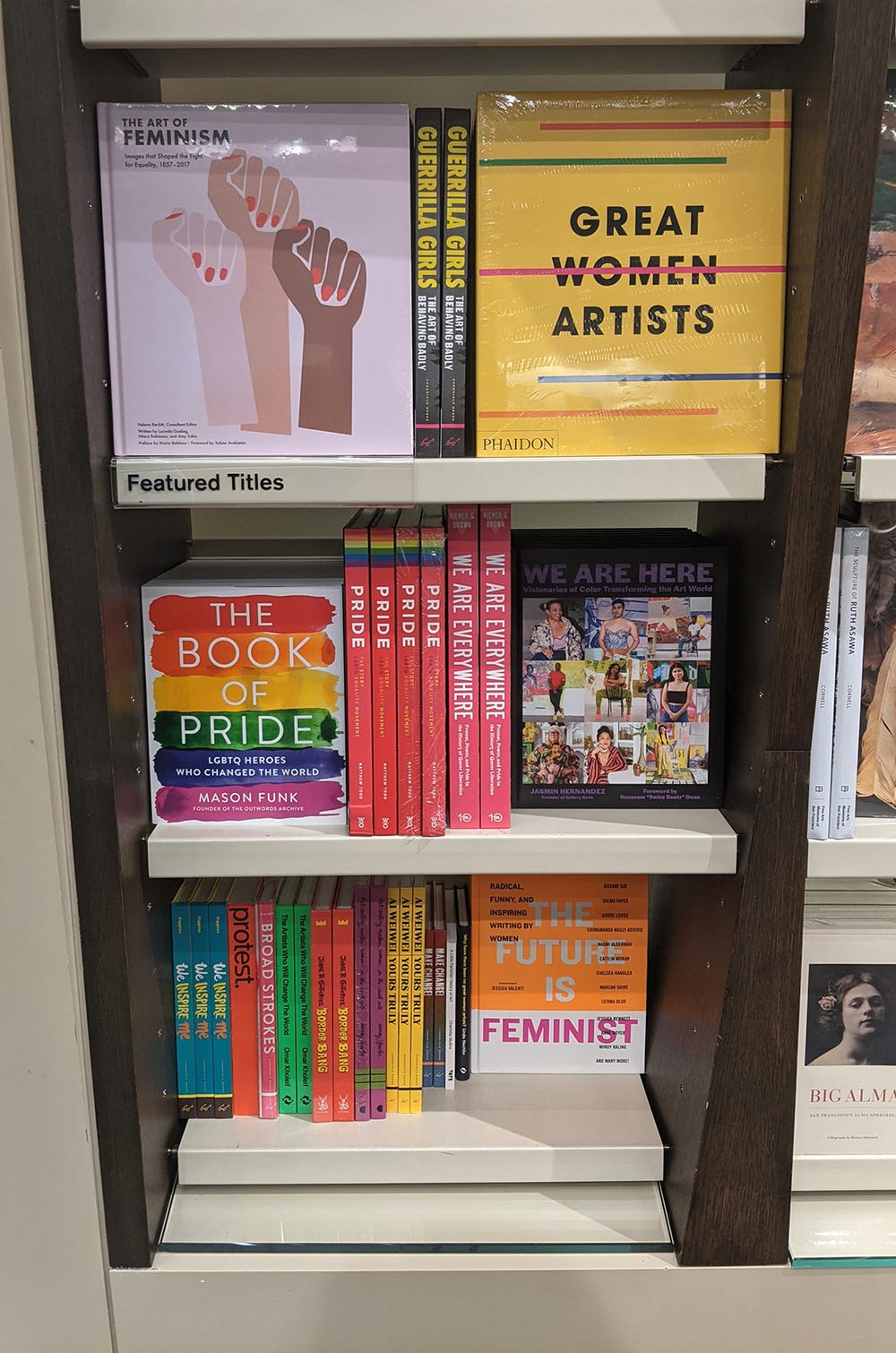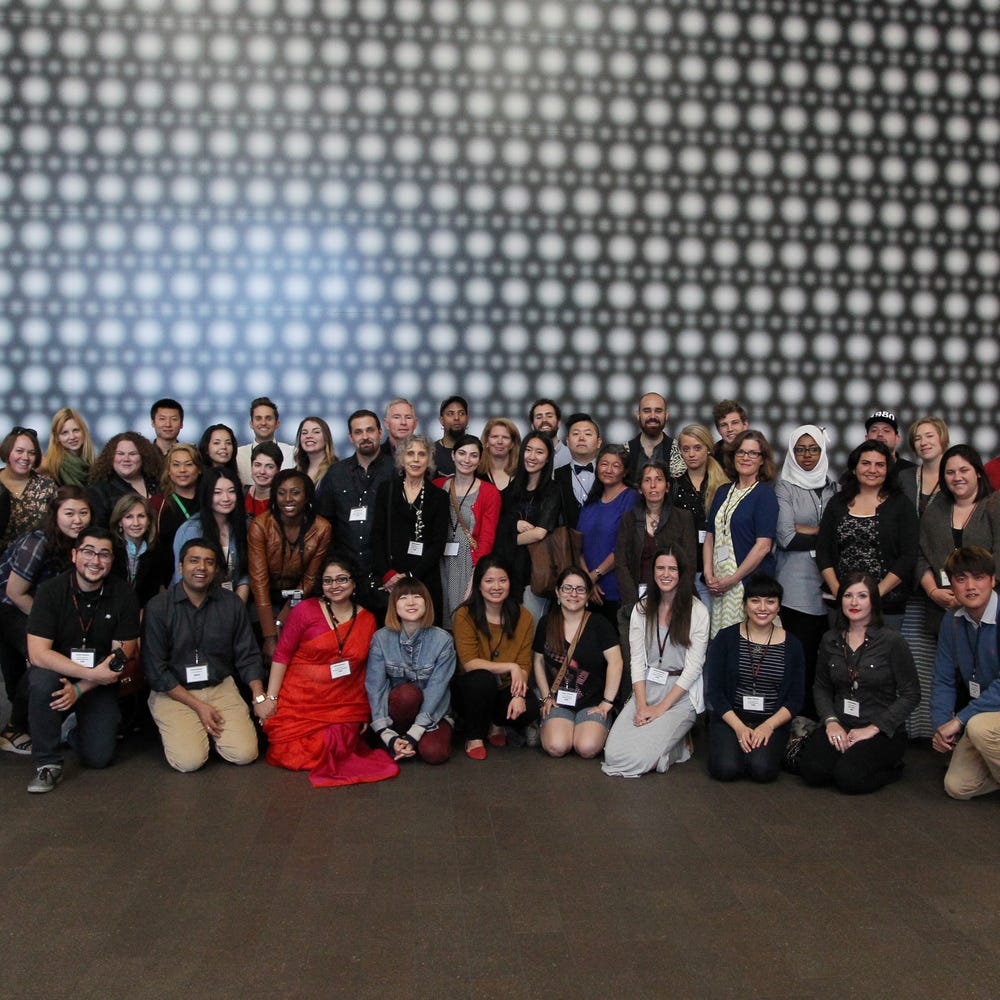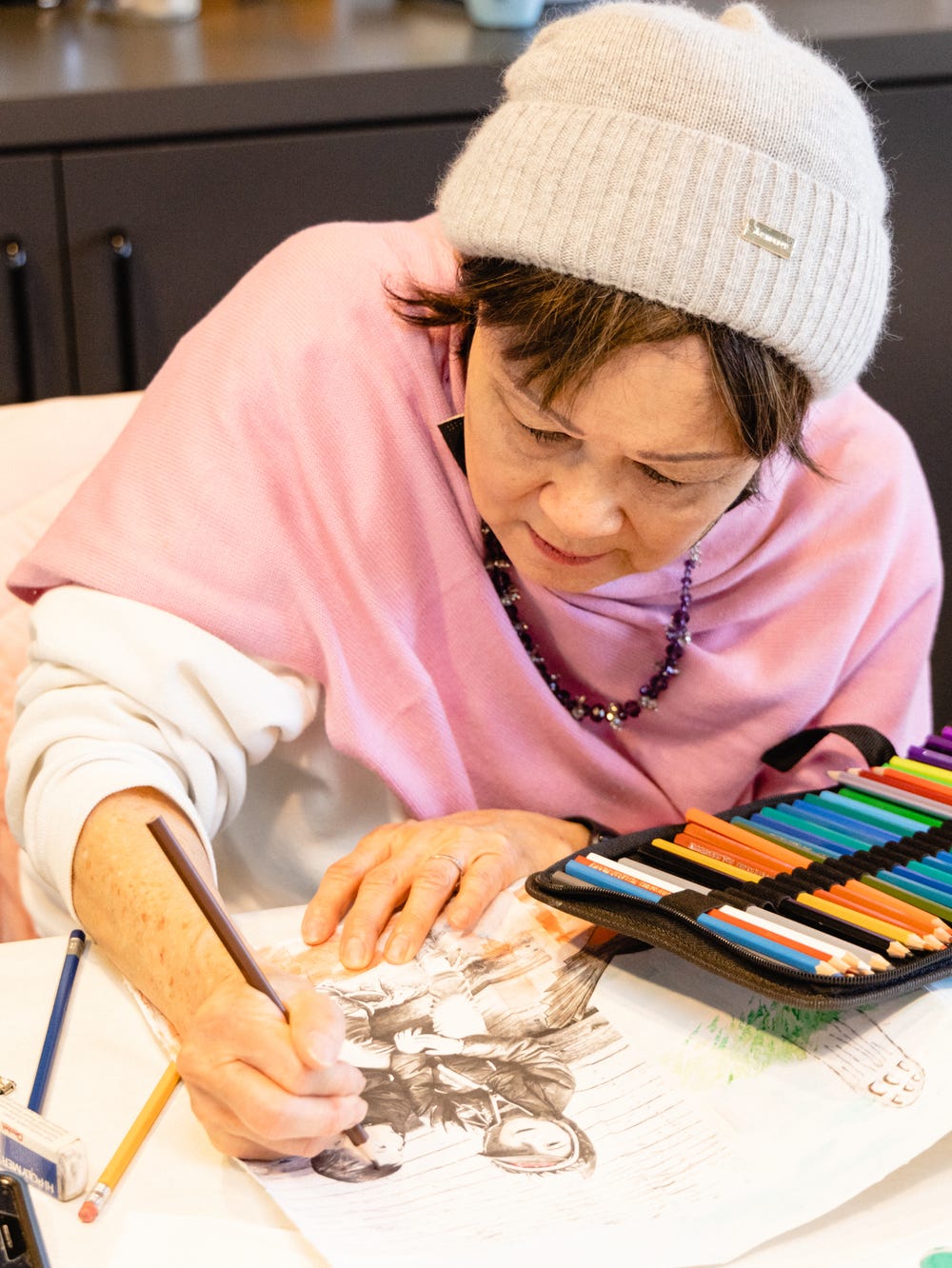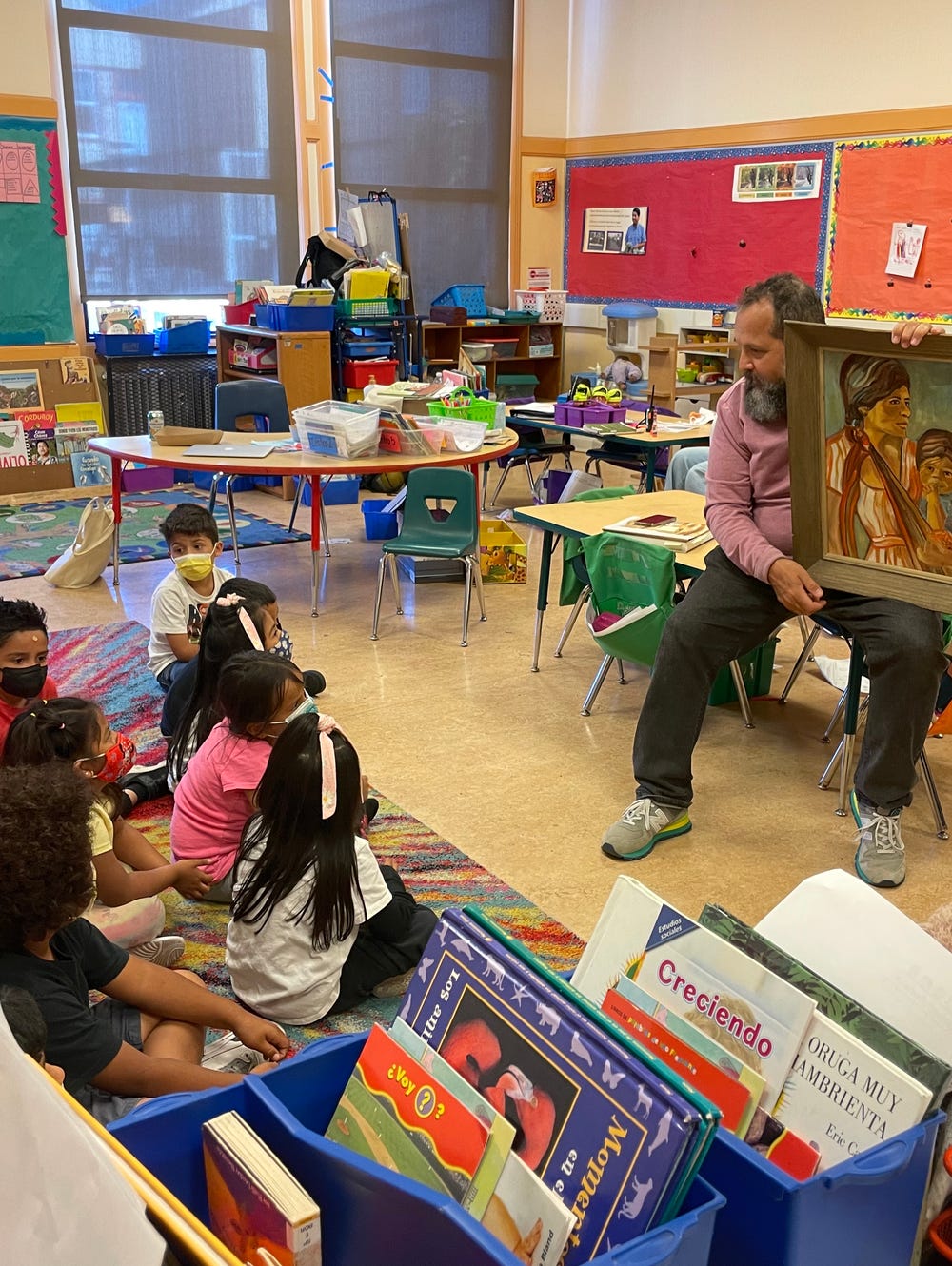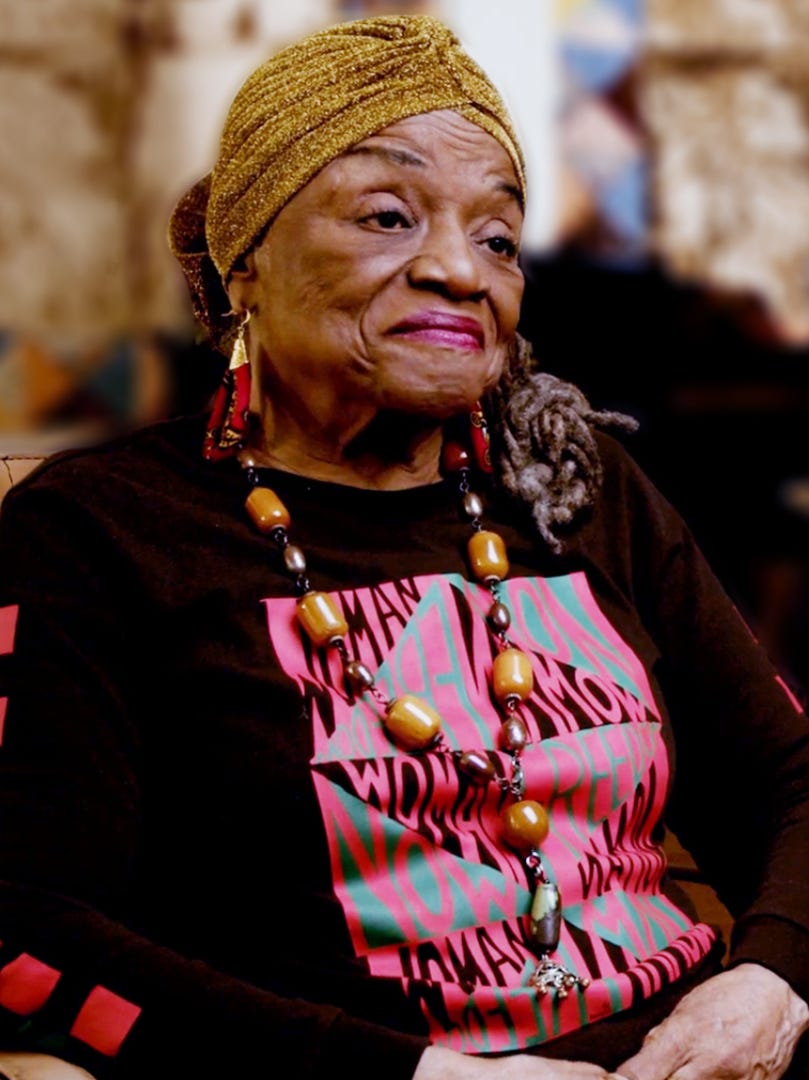The Museum Stores, as a department of the Fine Arts Museums of San Francisco, recognizes and embraces the clear institutional call to evolve into an anti-racist institution and to promote greater inclusiveness, diversity, and representation.
Unlike other general retail businesses, the Museum Stores must maintain unconditional focus on the guidelines governing the Museums’ institutional operations. The store’s mission statement defines our educational role in support of the Museums’ many collections, exhibitions, and programs. All merchandise sourced and offered in the stores needs to adhere to this mission. This acts as our underlying compass, fundamentally directing all decisions on the products we choose for the stores.
Books, as a category, occupy a unique position in this overall merchandise mix. No other single item in the stores so concretely demonstrates the support of our mandated educational mission. Assembling a select list of related titles in support of diversity and inclusion was a natural early response to the greater institutional call. In the same manner that we would put together a selection of related titles for a special exhibition, we put together a list of books centered around the critical subjects of anti-racism, representation, and inclusion.
Related titles in support of diversity and inclusion.
A key title from this new vital grouping, for example, is Ibram X. Kendi’s How to Be an Antiracist (One World, 2019). Displaying and selling this book helps to initiate a difficult dialogue on societal privilege in a much more overt way than a mug, magnet, or T-shirt. Other products are not exempt from our mission statement and do actively fulfill an educational role, but perhaps not in the same way as a related book. Other new titles, such as A Black Women’s History of the United States (Daina Ramey Berry and Kali Nicole Gross, Beacon Press, 2020), or An Indigenous People’s History of the United States (Roxanne Dunbar-Ortiz, Beacon Press, 2015), posit complex ideas regarding alternate cultural histories and representation unrivaled by other product categories.
Beyond simply buying new assortments of books, the actual method we use to merchandise and prioritize existing inventory works to help solidify our commitment to anti-racism and diversity. The Museums’ directive challenges us to reevaluate the overall impression of what we choose to feature and present to customers, because our visual displays essentially define the story we tell as a retail operation. Customers perusing stacked copies of Hung Liu: Portraits of Promised Lands (Yale University Press, 2021) are encouraged to enter its narrative of migration and marginalized peoples.
Independent booksellers thrive by offering a curated selection of books, from featured new arrivals to staff recommendations. Customers entering those stores gravitate towards the front displays, looking for that distinct grouping of hand-picked titles. Our museum stores have a similar dynamic, with impactful displays presenting our own curated list of titles for consideration. We hope that by better representing our own diverse Bay Area communities with these offerings, we can provide a more welcoming experience for all our customers and tell a more inclusive story. An outward facing display of Chinatown Pretty: Fashion and Wisdom from Chinatown’s Stylish Seniors (Andria Lo and Valerie Luu, Chronicle Books, 2020) celebrates the rich heritage of the Chinatowns in several cities, and the seniors who contribute so much to their neighborhoods and communities.
A merchandised selection of featured titles and new arrivals.
This merchandise strategy also extends to our online store shop.famsf.org. Over the past several months, we have highlighted several collections of books on various landing pages to support the Museums’ initiative. Categories such as “Great Women Artists,” “Black Artists Matter,” and an ongoing diversity and inclusion callout are intended to promote and better celebrate representation. Similar to in-store customers stepping inside our physical space and engaging with our merchandise displays, our online customers encounter these thematic highlights right on the home page for books.
Screenshot of shop.famsf.org’s “Books” homepage.
We have also avoided more traditional categories in planning for our upcoming 2021 Holiday Gift Guide. Rather than just the expected “Gifts for Him” or “Gifts for Her” collections, this year we are featuring product groupings around themes such as “Indigenous Spirit” and “Fair-Trade Living.” African Artists: From 1882 to Now (Phaidon Press, 2021) is a recommended holiday title that addresses artists normally considered outside the canon of Western art.
We take care to avoid the perception of exploiting a hot-button subject like racial justice in a cynical attempt at a cash grab. We chose not to package an African American History Month collection online in February, but instead decided to run a longer campaign featuring books on African American artists. Our intent was to communicate our support, but without seeming to make a hollow marketing gesture because the month demanded it.
It would be a disservice, however, to fail to recognize the essential fact that the Museum Stores are a key earned-revenue generator for the Museums, and that we do not function as a lending library or classroom extension, although we do have an educational role. Books, and all other merchandise categories, cannot simply exist as window dressing, but must perform well to justify their overall presence in the stores.
The Museums’ initiative also extends an opportunity to pause and reflect upon implicit bias in the buying process. The need for sales potentially offers a convenient cover to pass on books by women or artists of color in favor of books about high-profile artists whose universal name recognition offers an easy excuse to stock those books on our shelves instead. Of course, we will continue to offer monographs on important artists like Claude Monet or Richard Diebenkorn, but we are increasingly mindful of highlighting artists who have been previously excluded or underrepresented.
Some of the decision-making process is out of our control, since the publishing industry ultimately determines which artists receive monograph treatment and which books stay in print. Books about the work of key artists in the collections of the Legion of Honor, such as Elizabeth Vigée Le Brun and Anne Vallayer-Coster, may have been available at some point, but they have quickly lapsed out of print and become unavailable. Publishing trends directly impact which books we can offer in our stores. Currently, the publishing industry seems to be experiencing a moment when national issues of diversity and representation are at the forefront of interest, giving us a greater opportunity to select new relevant titles for our shelves.
A recently merchandised selection of books on artists.
Before we become too self-congratulatory on our efforts, however, we do need to understand that simply stating our good intentions in the short term is not enough. Interestingly, this need to promote overlooked artists, while simultaneously acknowledging the long-term goal to normalize their inclusion in the overall culture, is embodied in a recent book design. The cover of Great Women Artists (Phaidon Press, 2019) features a strike-through on the word “Women,” a not-so-subtle indication that the art world still has a long distance to travel in recognizing women in the broader pantheon of great artists—without the modifier. This design conceit acts as a general merchandising reminder that callouts and highlights may be important first steps but are not end goals in and of themselves.
Our place in the museum community also allows for books referencing contemporary museum culture. Culture Strike: Art and Museums in an Age of Protest (Laura Raicovich, Verso Press, 2021) examines the moment of reckoning museums are facing regarding their collections and the unfolding movement for racial justice. We Are Here: Visionaries of Color Transforming the Art World (Jasmin Hernandez, Abrams Books, 2021) looks at artists whose works have been historically excluded from the institutional discourse. Placing these titles on our shelves acknowledges the evolving discussion of museums and their role in society.
Selection of titles related to women artists and referencing contemporary-museum culture.
Our own Fine Arts Museums of San Francisco publications are an important indicator of the bigger dialogue happening in the arts community. We are looking forward to the release of de Young 125, an upcoming FAMSF publication that promises a new contextual analysis of the museum’s artworks across all curatorial departments and in a cross-cultural light, in celebration of the de Young’s recent one-hundred-twenty-fifth anniversary. Offering our own FAMSF book, particularly one that specifically reexamines the standards of how the museum considers and organizes its collections, provides an opportunity to underscore the institution’s commitment to inclusivity.
We understand that there are no easy answers to complex questions surrounding racial and social injustice, but the Museum Stores are fully supportive of the Museums’ commitment to anti-racism and diversity. We will continually work to create a safer and more welcoming space for our store customers, with a greater sensitivity towards representing the Bay Area’s diverse backgrounds and communities to which we belong and serve.
Text by Tim Niedert, Book and Media Manager of the Museum Stores; and Stuart Hata, Director of Retail Operations.
Learn More about our anti-racism work.
